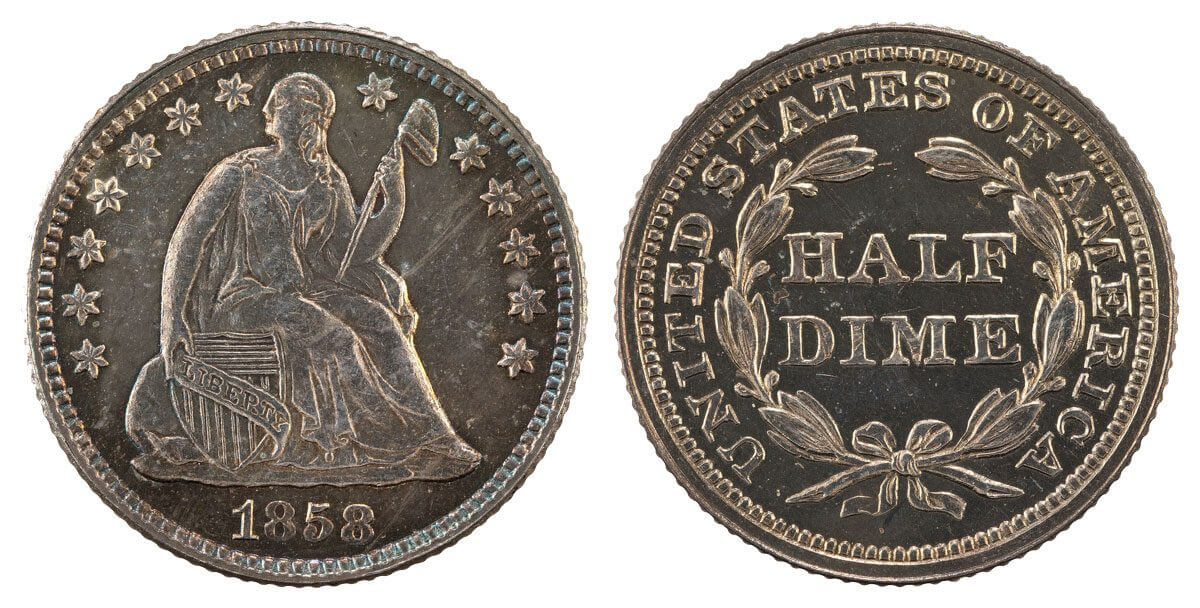Coin collectors have a vocabulary they use to describe the coins they collect. Learning the lingo will help you clearly communicate with other coin collectors (numismatists). If I missed a term, please say so in the comments and I’ll add it to the list.
Category: Articles
Dollar coin
The dollar coin have been around since the mint began producing coins in 1794, but because demand dwindled the mint stopped producing dollar coins for circulation in 2011. This article reviews all US dollar coins, from silver and gold dollars, to the modern metal clad “silver” and “golden” dollars.
Half Dollar
The half dollar has been produced every year in the US since the US Mint was formed in 1794. Up until 1964 quarters were made of 90% silver, then from 1965 to 1969 they were made of 40% silver, and and from 1971 onward they’re copper-nickel clad. In the past half dollars were widely used, but demand dropped after the move away from silver and eventually production for circulation stopped in 2001). The following half dollar design variations were minted for general circulation: Flowing Hair half dollar (1794-1795), Draped Bust half dollar (1796-1807), Capped Bust half dollar (1807-1839), Seated Liberty half dollar (1839-1891), Barber half dollar (1892-1915), Walking Liberty half dollar (1916-1947), Franklin half dollar (1948-1963), Kennedy 90% silver half dollar (1964). Kennedy 40% silver half dollar (1965-1969), Kennedy copper-nickel clad half dollar (1971-2002). From 2002 onward Kennedy half dollars have been made to satisfy the demand of collectors but not for general circulation.
Quarter
The first quarters were minted in 1796 and made of silver. It wasn’t until 1965 that silver was swapped out for a cheaper copper-nickel alloy. The quarter has undergone many variations: Draped Bust quarter (1796-1807), Capped Bust quarter (1815-1838), Seated Liberty quarter (1838-1891), Barber quarter (1892-1916), Standing Liberty quarter (1916-1930), Washington silver quarter (1932-1964), and the Washington copper-nickel quarter (1965-present).
Twenty-cent Coin
The silver twenty-cent coin was only minted for circulation for two years (1875, 1876) before it was abolished. It was very similar in size, design, and value to the quarter… resulting in confusion and little demand. It’s just a fraction smaller than the quarter but unlike a quarter it has a smooth rim.
Dime
The dime, worth ten cents, has been minted in the US since 1792. Dimes (originally “disme”) were made of roughly 90% silver until the Coinage Act of 1965, after which they were made of a copper and nickel. There are several design variations: Draped Bust dime (1796-1807), Capped Bust dime (1809-1837), Seated Liberty dime (1837-1891), Barber dime (1892-1916), Winged Liberty Head aka Mercury Dime (1916-1945), Roosevelt dime (1946-present).
Half Dime
The silver half dime, worth five cents, is the precursor to the nickel. It was first minted in 1792 and continued until 1873 when it was replaced with the cheaper to produce nickel. There are several nickel designs: Flowing Hair nickel (1794-1797), Draped Bust Small Eagle Reverse nickel (1796-1797), Draped Bust Heraldic Eagle Reverse (1800-1805), Capped Bust nickel (1829-1837), Seated Liberty nickel (1837-1873).
Three-Cent Coin
Three-cent coins comes in two variations: the three-cent silver coin (1851-1873) and the three-cent nickel (1865-1889). The three-cent silver coin features of six headed star, the three-cent nickel features the Liberty head. They’re very small… they have a diameter slightly smaller than a modern dime. Production of the three-cent pieces ceased after the Coinage Act of 1873.
Two-Cent Coin
The two-cent coin was minted for circulation from 1864 to 1872. Abraham Lincoln signed the Coinage Act of 1864 which made it legal to mint coins in non-precious metals. Previously coins were made of precious metals like copper, nickel, silver, and gold. The two-cent coin was one of the first coins minted as non-precious metal alloy. It was also the first US coin to be inscribed with the phrase “In God We Trust”.
Large Cent
The large cent (as opposed to the small cent size of the modern penny) was minted from 1793 until 1857 when it was replaced by the small cent. The diameter of a large cent is slightly bigger than a modern day quarter and made of solid copper. There are several variations of the large cent: flowing hair cents, liberty cap cents, draped bust cent, classic head cents, coronet or matron head cents, braided hair cents.








